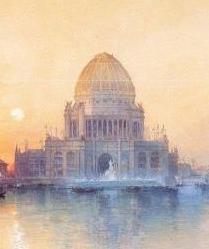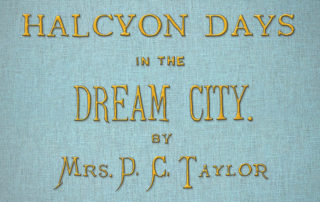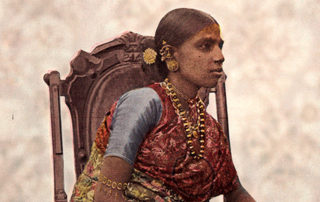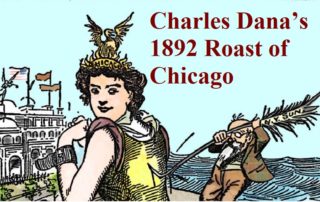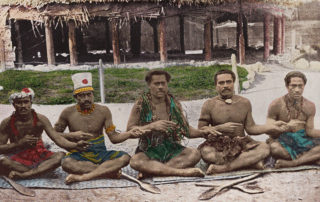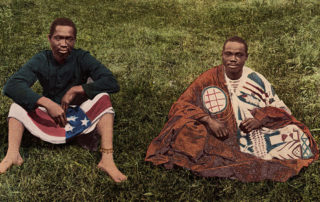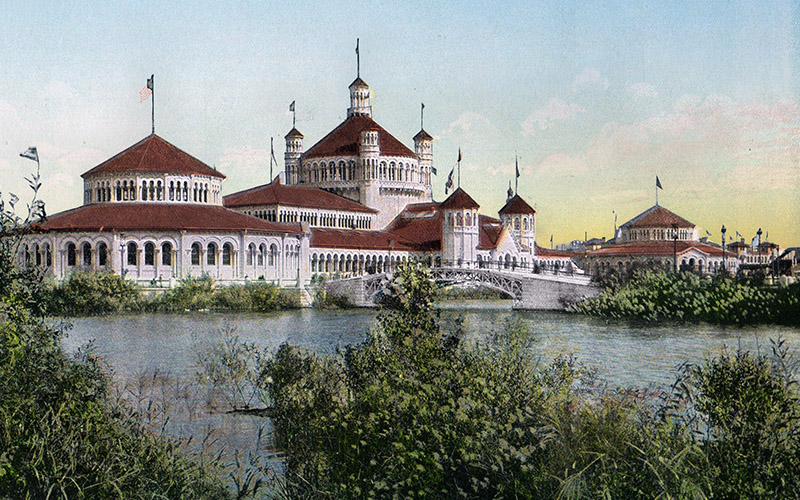
Reprinters Row
A collection of reprinted texts and images
from the 1893 World’s Columbian Exposition
“Halcyon Days in the Dream City’’ Part 2: The Plaisance
Halcyon Days in the Dream City by Mrs. D. C. Taylor Continued from Part 1 A May morning, cool but not cold, with a brisk wind, blowing, cloud shadows and sun bursts chasing one another across the deep blue sky. To-day we make our way straight from the 60th street entrance to the Midway Plaisance. When we have passed through that tunnel like passage under the intramural railway, we [...]
“Halcyon Days in the Dream City’’ Part 1: Salve
Halcyon Days in the Dream City by Mrs. D. C. Taylor Continued from Introduction With what joyous hearts and eager eyes, we first stepped through the turnstile at the 60th street entrance to the great Columbian Exposition of ’93. For three years we had talked of it, dreamed of it, read about it, and now at least it was a thing accomplished and we had entered the charmed precincts. [...]
“Halcyon Days in the Dream City”: Introduction
Personal accounts of trips to the 1893 World’s Fair offer candid and authentic insight into how visitors experienced the World’s Columbian Exposition in Chicago. Visitors famous and unknown have left behind memories of the Midway and whims of the White City on postcards and letters back home, in personal diaries preserved in archives, and through first-hand accounts published in newspapers. Some recollections appear in bound volumes published both professionally—Henry [...]
108. Picturesque World’s Fair – Miriamna, A Woman from Ceylon
MIRIAMNA, A WOMAN FROM CEYLON.—The Singhalese type was well illustrated in Miriamna, a woman who, from the nature of her position at the Fair, became, perhaps, better known than any other one of her race there. The Ceylon tea room, in the Woman's Building, was a popular resort, and there Miriamna sold tea and made a pretty picture as she moved about. She was a wee bit of a [...]
Charles Dana’s 1892 Roast of Chicago, Part 4. Chicago Responds to the New York Sun’s “Thoroughly Mugmump Concoction”
The May 29, 1892, issue of New York Sun contained a nearly full-page invective titled “Chicago As Chicago Is.” Although the piece was signed "THE PICADOR," news outlets attributed this diatribe directly to the Sun’s editor and owner, Charles Dana. Having rebounded from the Great Fire of 1871, the Windy City easily extinguished his malicious editorial roast.
Charles Dana’s 1892 Roast of Chicago, Part 3. “A Desperate, Perhaps Final, Crisis in Her History”
The May 29, 1892, issue of New York Sun contained a nearly full-page invective titled “Chicago As Chicago Is.” Although the piece was signed "THE PICADOR," news outlets attributed this diatribe directly to the Sun’s editor and owner, Charles Dana. Having rebounded from the Great Fire of 1871, the Windy City easily extinguished his malicious editorial roast.
Charles Dana’s 1892 Roast of Chicago, Part 2. “The Metropolis of Misrepresentation”
The May 29, 1892, issue of New York Sun contained a nearly full-page invective titled “Chicago As Chicago Is.” Although the piece was signed "THE PICADOR," news outlets attributed this diatribe directly to the Sun’s editor and owner, Charles Dana. Having rebounded from the Great Fire of 1871, the Windy City easily extinguished his malicious editorial roast.
Charles Dana’s 1892 Roast of Chicago, Part 1. “This is Chicago!”
The May 29, 1892, issue of New York Sun contained a nearly full-page invective titled “Chicago As Chicago Is.” Although the piece was signed "THE PICADOR," news outlets attributed this diatribe directly to the Sun’s editor and owner, Charles Dana. Having rebounded from the Great Fire of 1871, the Windy City easily extinguished his malicious editorial roast.
107. Picturesque World’s Fair – Five Samoan Warriors in Character Song
FIVE SAMOAN WARRIORS IN A CHARACTER SONG.—There was a theatre in the village where the Samoans were, and they gave daily performances of no mean quality. Among these were the Tapate, a dance peculiar to the Wallis islanders in which both men and women appeared, the men carrying paddles which they struck together as the dance proceeded to the time beaten on a stick by one of the number [...]
106. Picturesque World’s Fair – Dahomey Men
DAHOMEY MEN.—The Dahomey Village consisted of three houses and a group of huts, much of the material being brought from Dahomey for the purpose, and was occupied by sixty men and forty women. Other Pages from PICTURESQUE WORLD’S FAIR.
REPRINT SERIES
Picturesque World’s Fair: An Elaborate Collection of Colored Views (W. B. Conkey Company. 1894)
